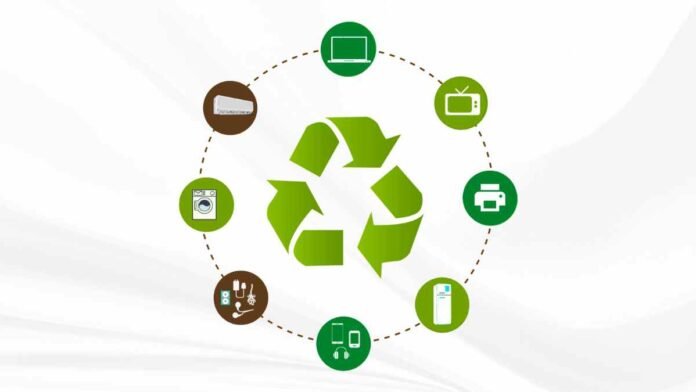Recycling e-waste serves a variety of applications. For example, keep such gadgets out of landfills to safeguard human and environmental health. Or retrieving valuable pieces from gadgets and giving manufacturers with recycled metals that may be utilised to construct new goods.
After China and the United States of America, India is the third largest producer of e-waste. According to a study from the Central Pollution Control Board (CPCB) for fiscal year 2019-2020, India created 1,014,961.2 tonnes of e-waste from 21 different categories of electrical and electronic equipment (EEE).
According to the Associated Chambers of Commerce and Industry of India (ASSOCHAM) and KPMG joint study on Electronic Waste Management in India, released in September 2017, computer equipment accounts for nearly 70% of e-waste, followed by phones (12%), electrical equipment (8%), and medical equipment (7%), with the remainder coming from household e-waste.
Health and environmental issues
With heavy metals and extremely hazardous compounds including mercury, lead, beryllium, and cadmium, e-waste is a huge threat to humans, animals, and the environment. When burned, it emits toxic substances like as lead, which has a negative influence on human blood, kidneys, and the peripheral nervous system. It is a costly technique that only a few rich countries can afford. In India, e-waste recycling is mostly an informal sector activity, with thousands of poor households earning a living by scavenging items from rubbish dumps. Despite the Ministry of Environment, Forestry, and Climate Change issuing the e-waste (Management) Rules in 2016, there are still obstacles to proper waste management.
Management of e-waste
In order to manage the e-waste risk, there is an urgent need to transition from a linear and reuse economy to a circular economy. The linear economy follows the cycle of raw material, production, use, production, and non-recyclable trash, whereas the circular economy follows the cycle of raw material, production, use, production, and recycling waste. The government should promote young entrepreneurs by offering financial assistance and technological mentoring, with incentives in the form of tax breaks or refunds. Consumers, retailers, state governments, municipalities, NGOs, CSOs, Self-Help Groups (SHGs), local collection agencies, and others must all play an appropriate role in infrastructure collection, facilitation, and creation. Digitally linking stakeholders will provide chances for industry collaborations, and stakeholder involvement will result in the implementation of comprehensive waste segregation, collection, and disposal best practises.
The key to success is raising awareness
Funding and incentives should be offered to non-governmental organisations (NGOs) and Self-Help Groups (SHGs) to promote information campaigns, capacity building, and awareness among key stakeholders, including end consumers. This may be accomplished by focusing on RWAs, elementary and secondary schools, and colleges, among other places. The government should organise a multi-stakeholder dialogue in order to build an e-waste management system and to boost information, education, and communication initiatives in schools, universities, and industry. Additionally, “E-waste awareness ambassadors” should be established on college campuses to engage students and convey the vital ideas. Furthermore, school curricula should be established with an emphasis on e-Waste management.
Aligning the UN Sustainable Development Goals with e-waste management
To accomplish the 2030 Agenda for Sustainable Development, all stakeholders in e-waste management must design and execute policies that are consistent with the UN Sustainable Development Goals. Understanding and managing E-waste is intimately related to Goals 3 and 6 (Clean Water and Sanitation), Goal 11 (Sustainable Cities and Communities), Goal 12 (Responsible Consumption and Production), Goal 14 (Life Below Water), and Goal 8 (Decent Work and Economic Growth).
For latest Bollywood Update Follow us on Instagram & Watch on Youtube



